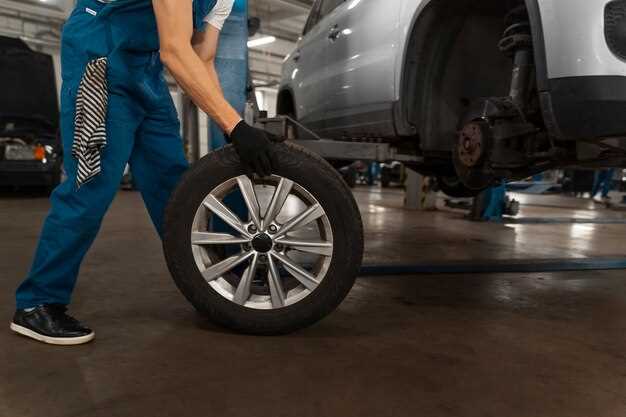
Why wheel alignment is crucial for tire health

Proper wheel alignment is a critical factor that significantly impacts the wear and longevity of your tires. When your vehicle’s wheels are aligned correctly, each tire makes optimal contact with the road, ensuring even distribution of weight and minimizing unnecessary friction. This balance not only enhances driving performance but also contributes to the overall safety of the vehicle.
Misalignment can lead to uneven tire wear, causing some areas of the tire to degrade faster than others. This uneven wear can result in a shortened lifespan for your tires, forcing you to replace them sooner than necessary. In contrast, maintaining proper alignment can increase tire longevity, providing better value and improving fuel efficiency.
Investing time and resources into regular wheel alignment checks is essential for any vehicle owner. By understanding the importance of proper alignment, motorists can take proactive measures to extend the life of their tires and enjoy a smoother, safer ride. Neglecting this aspect of vehicle maintenance can lead to avoidable costs and potential safety hazards on the road.
How Misalignment Accelerates Tire Wear and Decreases Performance

Misalignment occurs when the wheels are not positioned correctly relative to each other and the vehicle’s body. This condition can significantly affect tire wear and overall performance. When the alignment is off, the tires are subjected to uneven forces during driving. As a result, certain areas of the tire will bear more weight and friction than others, leading to accelerated wear.
One of the primary consequences of misalignment is the development of uneven tread patterns. Tires may exhibit excessive wear on the inner or outer edges, causing them to need replacement sooner than properly aligned tires. Such uneven wear not only shortens tire lifespan but can also lead to reduced traction and compromised handling, particularly in wet or slippery conditions.
Additionally, misaligned wheels can create increased rolling resistance. This means the engine has to work harder to move the vehicle, resulting in decreased fuel efficiency. Over time, this not only adds to operational costs but also places additional strain on the vehicle’s components.
Moreover, misalignment can affect driving comfort and safety. Poor alignment often causes the vehicle to pull to one side, making it difficult to handle. Drivers may need to constantly adjust the steering wheel, which can lead to fatigue and a less enjoyable driving experience. Furthermore, compromised handling can increase the risk of accidents, particularly in emergency situations.
In summary, maintaining proper alignment is crucial for prolonging tire lifespan and ensuring optimal vehicle performance. Addressing misalignment promptly can save money on tire replacements and enhance overall safety on the road.
Signs of Misalignment: When to Seek Professional Help

Proper wheel alignment is crucial for maximizing tire longevity. Recognizing the symptoms of misalignment early on can save you from costly repairs and premature tire wear. Here are some key signs to look out for:
Uneven Tire Wear: One of the most noticeable indicators of misalignment is uneven wear patterns on your tires. If you observe that one side of a tire is wearing down significantly faster than the other, it suggests that the wheels are not aligned correctly. Regularly inspecting your tires can help identify this issue.
Pulling to One Side: If your vehicle consistently pulls to the left or right while driving on a straight road, it may be a sign of misalignment. This pulling can lead to driver fatigue and further tire wear as you constantly adjust the steering wheel to keep the car straight.
Steering Wheel Off-Center: When your steering wheel is not centered while driving straight, it often indicates that the wheels are misaligned. This misalignment can not only affect your comfort while driving but also contribute to uneven tire wear over time.
Vibration in the Steering Wheel: A vibrating steering wheel can be another sign of misalignment. This vibration often occurs because the tires are not making contact with the road evenly. If you experience this sensation especially at certain speeds, it’s advisable to have your vehicle checked.
Regular Maintenance Recommendations: To maintain tire health, it’s essential to have your wheel alignment checked during routine maintenance, especially after hitting a pothole or curb. Keeping up with regular inspections can help catch misalignment issues before they cause significant damage to your tires.
If you notice any of these signs, it’s important to seek professional help. Timely intervention can not only restore your vehicle’s handling but also prolong the life of your tires, ensuring that they wear evenly and perform optimally.
Routine Maintenance: Best Practices for Maintaining Proper Wheel Alignment
Maintaining proper wheel alignment is essential for enhancing tire longevity and ensuring a smooth driving experience. Regular checks and adjustments can prevent uneven tire wear and improve overall vehicle performance. Here are some best practices for routine maintenance of wheel alignment.
1. Regular Inspections: Schedule wheel alignment checks every 6,000 miles or whenever you notice irregular signs such as pulling to one side, uneven tire wear, or a crooked steering wheel. Regular inspections help catch alignment issues before they escalate.
2. Vehicle Load Awareness: Be mindful of your vehicle’s load. Overloading can lead to misalignment. Always adhere to manufacturer guidelines for weight capacity to maintain proper balance and alignment.
3. Tire Rotation: Rotate your tires every 5,000 to 7,500 miles. This practice not only promotes even tire wear but also supports maintaining alignment, as it offsets discrepancies caused by regular driving patterns.
4. Road Condition Monitoring: Pay close attention to the roads you frequently travel. Potholes, speed bumps, and uneven surfaces can drastically impact alignment. If you encounter rough roads, have your alignment checked to ensure it remains within specifications.
5. Professional Alignment Service: Utilize professional services for wheel alignment. Technicians can accurately adjust your alignment angles to manufacturer specifications, ensuring optimal tire performance and extending tire lifespan.
6. Keep an Eye on Suspension Components: Regularly inspect suspension components such as shocks and struts. Worn-out parts can lead to misalignment, affecting tire wear and handling. Replace any damaged components promptly.
7. Monitor Tire Pressure: Maintain proper tire pressure as specified by the manufacturer. Under-inflated or over-inflated tires can contribute to alignment issues, leading to premature tire wear and affecting overall traction.
8. Smart Driving Habits: Adopt smooth driving habits. Avoid sudden stops or sharp turns, as they can disturb wheel alignment. Gentle acceleration and deceleration can help preserve the integrity of your alignment.
Incorporating these best practices into your routine maintenance will promote proper wheel alignment, ultimately enhancing tire longevity, improving fuel efficiency, and ensuring a safe driving experience.